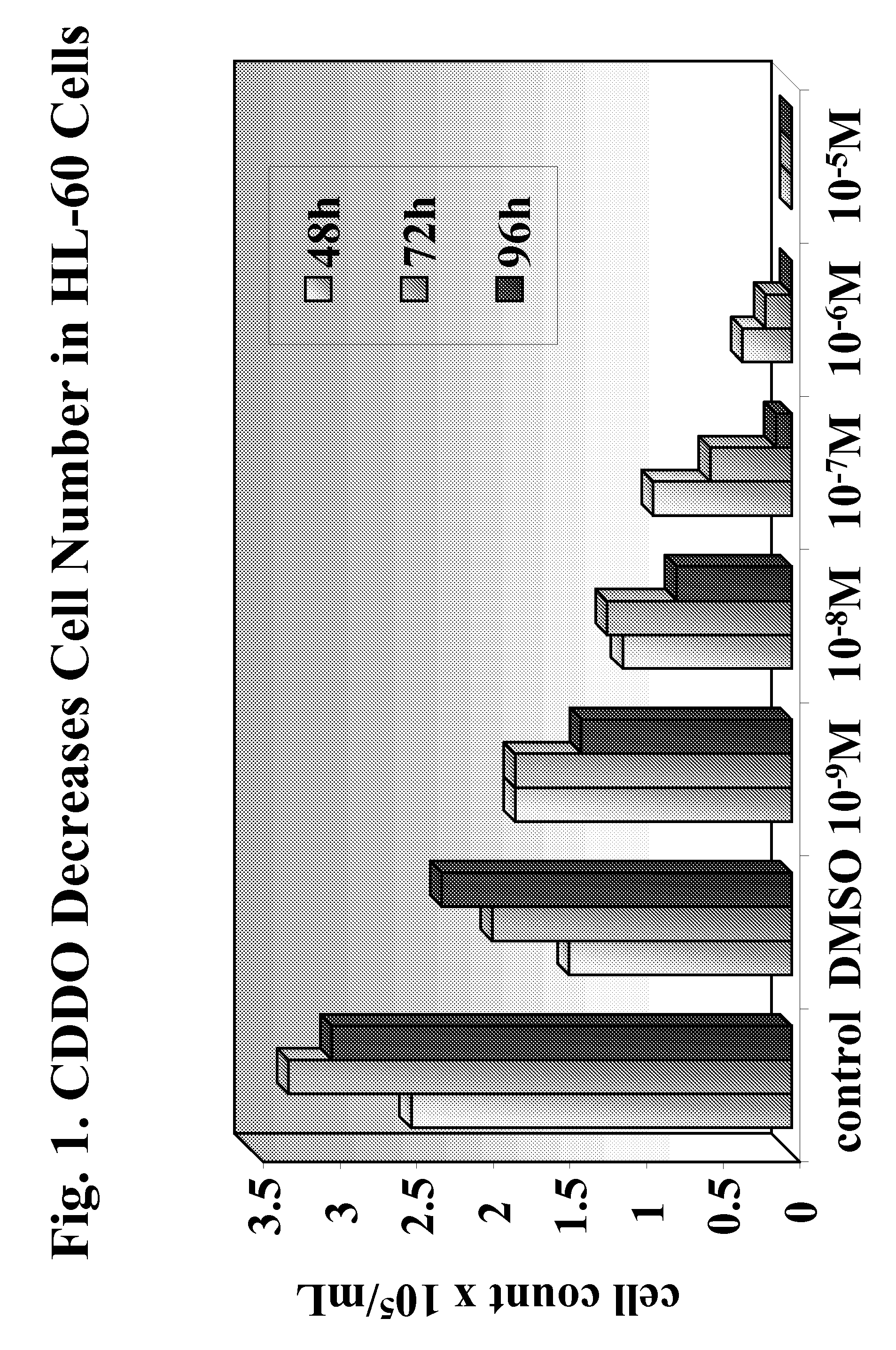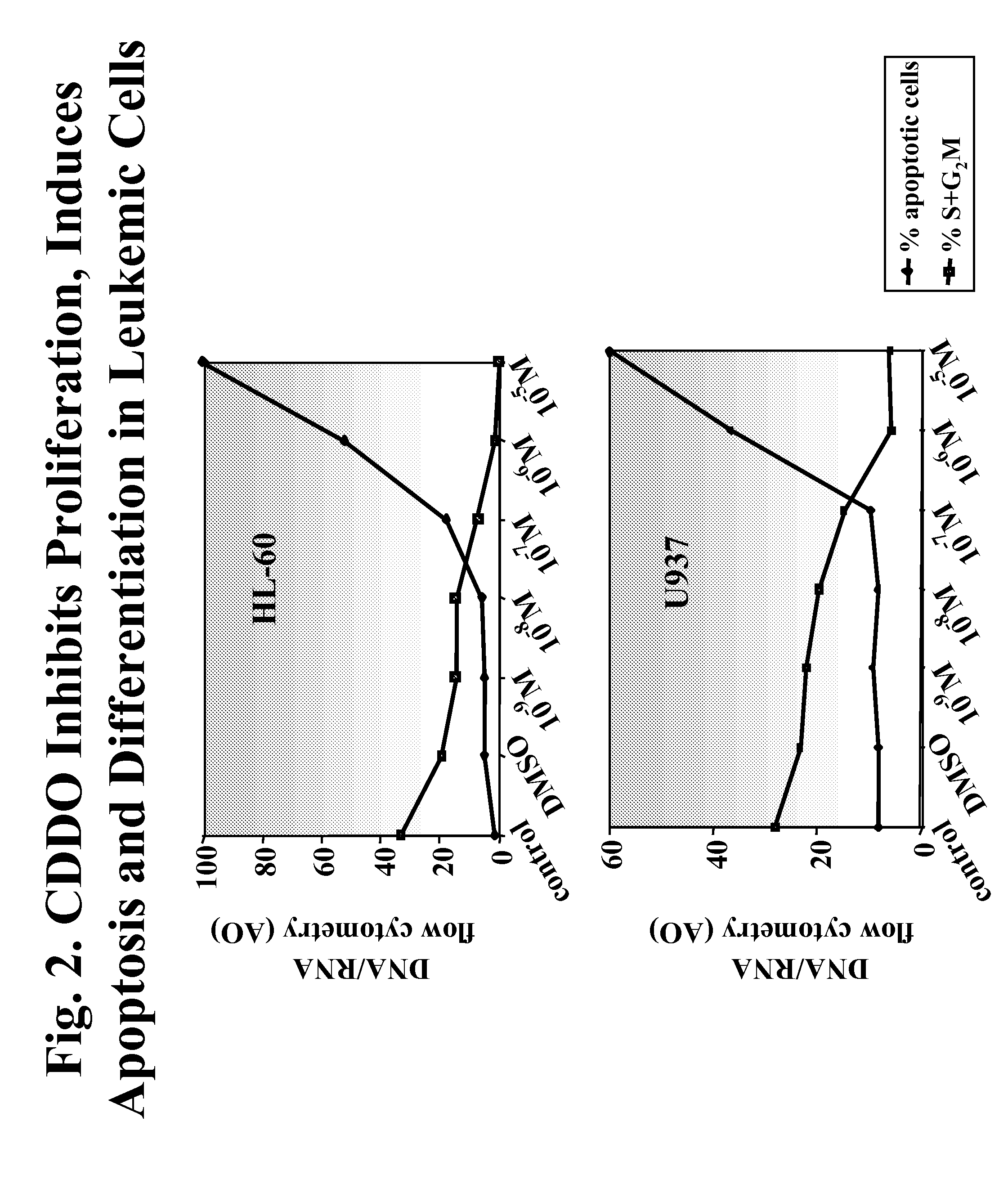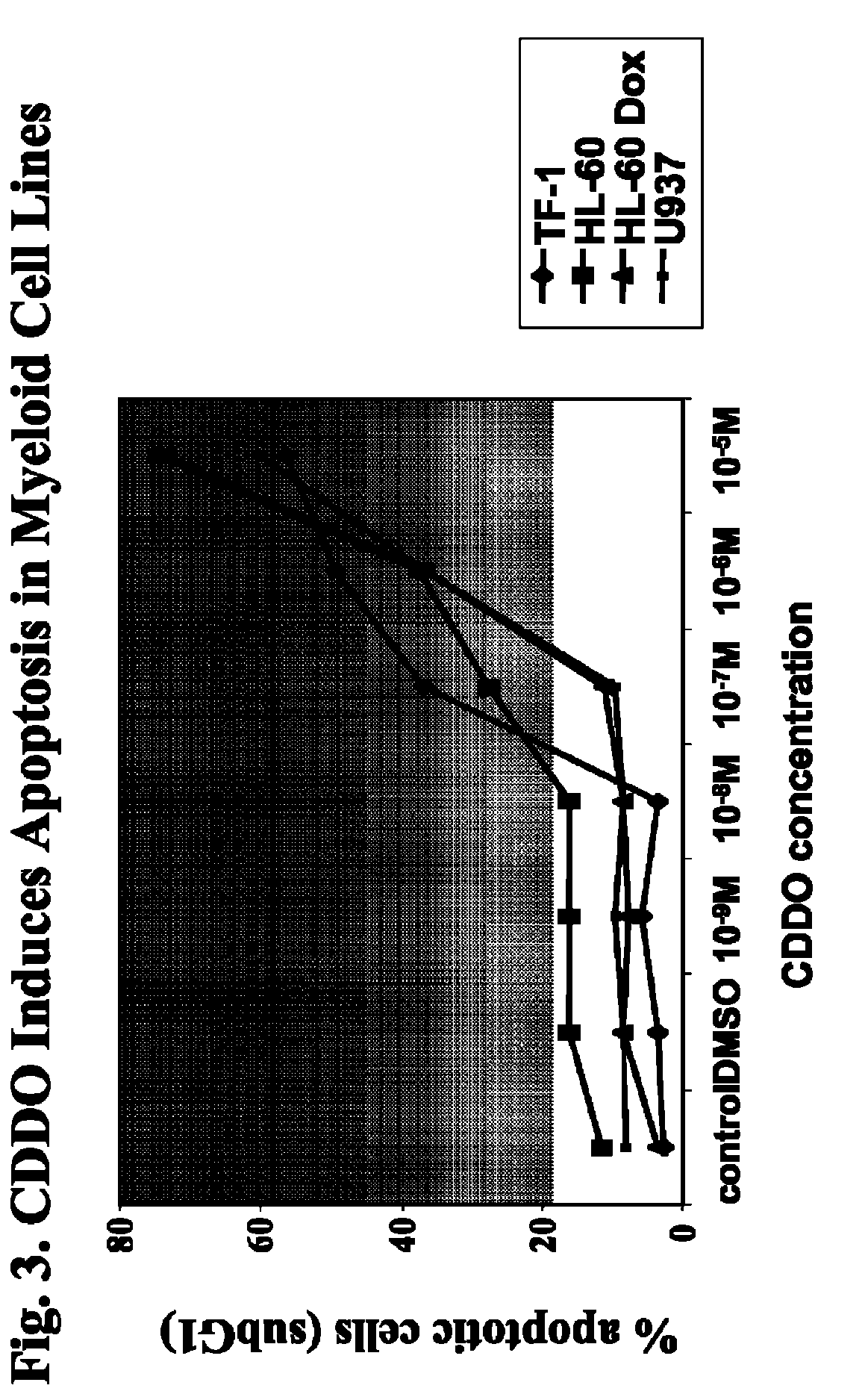CDDO-compounds and combination therapies thereof
a technology of cddo-compounds and compounds, applied in the field of cancer therapy, can solve the problems of increasing the cure rate of acute lymphoblastic leukemia (all), relapse of many patients after chemotherapy, and none of the treatments have proven optimal,
- Summary
- Abstract
- Description
- Claims
- Application Information
AI Technical Summary
Benefits of technology
Problems solved by technology
Method used
Image
Examples
example 1
Materials and Methods
[0285]Reagents. Stock solutions of CDDO and / or CDDO-Me at 10 mM in DMSO were stored at −20° C. Working solutions were prepared in DMSO and added directly to culture medium. ATRA was purchased from Sigma Chemical Co. (St. Louis, Mo.) and kept in 100% ethanol solution at −20° C. RXR-specific ligand LG-100268 was kindly provided by Dr. Richard Heyman. Caspase-3 inhibitor Z-DEVD-fmk and bongkrekic acid (BA) were obtained from Calbiochem (La Jolla, Calif.). Cyclosporin A (CyA) was purchased from Sandoz. Fas-signaling antibody CH 1 and Fas-blocking antibody ZB4 were obtained from Immunotech (Miami, Fla.).
[0286]Cell lines. HL-60, KG-1, U937, and Jurkat cell lines were obtained from the American Type Culture Collection (Rockville, Md.). NB4 cells were kindly provided by Dr. M. Lanotte. HL-60-doxorubicin-resistant cells (HL-60-DOX) were also used. U937 / Bcl-2 and its appropriate vector controls (U937 / pCEP) were provided by Dr. S. Grant. U937 cells were transfected with WT...
example 2
Anticancer Properties of CDDO-compounds and Combination Therapies Thereof
[0304]Two CDDO-compounds, 2-Cyano-3,12-Dioxoolean-1,9-Dien-28-Oic Acid (CDDO) and its C-28 methyl ester, (CDDO-Me) induce differentiation, inhibit cell growth and induce apoptosis in leukemia cell lines and in primary samples from patients with AML.
[0305]Described herein are the mechanisms and efficacy of these CDDO-compounds activities in AML which allows the use of these CDDO-compounds as drugs for the treatment of hematological malignancies. Growth-inhibitory effects of CDDO and CDDO-Me on primary AML in clonogenic assay systems including the NOD / Scid model of AML are described. The contributions of the mitochondrial (Bcl-2-regulated) and death receptor (Fas / Fas-L) pathways for the induction of apoptosis by CDDO and CDDO-Me are described. A decrease in Bcl-2 expression is demonstrated.
[0306]The inventors also show that CDDO and CDDO-Me are novel ligands for PPARγ which is highly expressed in AML. Also demons...
example 3
AML NOD / Scid Model
[0376]AML CD34±38− cells are able to repopulate NOD / Scid mice (so called Scid-repopulating cells) (Lapidot et al., 1994). Recent data (Ailles et al., 1999) demonstrated consistent engraftment of AML in NOD / Scid mice: 8 weeks after the intravenous injection of 107 AML cells, the average percentage of human cells in mouse marrow was 13.3% (5.7% for “good” and 20.5% for “poor” cytogenetic abnormalities). These results provide a basis to use AML NOD / Scid system as the best pre-clinical model for AML. The present inventors therefore, established an AML-NOD / Scid model.
[0377]Each mouse was injected with 107 MACS-separated CD34+ leukemic cells. The engraftment of human leukemic cells is determined at 6-8 weeks after transplantation by CD45 flow cytometry and Southern blot analysis using human α-satellite probe for chromosome 17. The clonality of leukemic cells is determined by FISH based on the known karyotype of the samples studied. Under these conditions, consistent engr...
PUM
 Login to View More
Login to View More Abstract
Description
Claims
Application Information
 Login to View More
Login to View More - R&D
- Intellectual Property
- Life Sciences
- Materials
- Tech Scout
- Unparalleled Data Quality
- Higher Quality Content
- 60% Fewer Hallucinations
Browse by: Latest US Patents, China's latest patents, Technical Efficacy Thesaurus, Application Domain, Technology Topic, Popular Technical Reports.
© 2025 PatSnap. All rights reserved.Legal|Privacy policy|Modern Slavery Act Transparency Statement|Sitemap|About US| Contact US: help@patsnap.com



